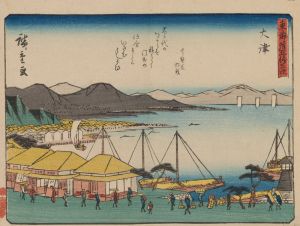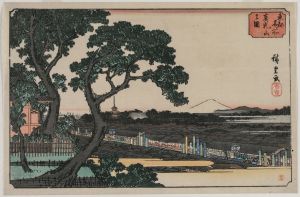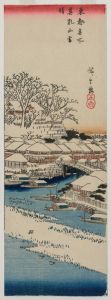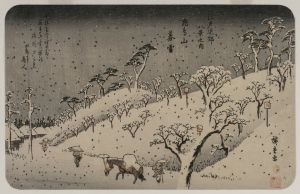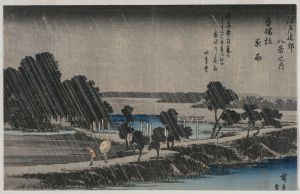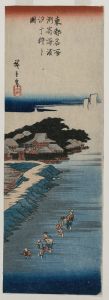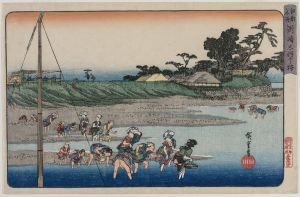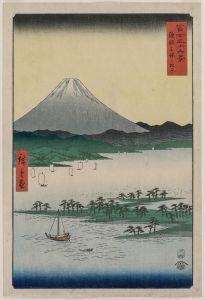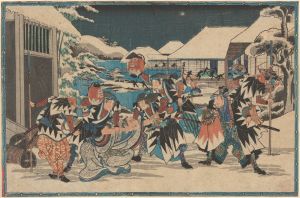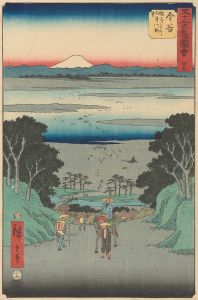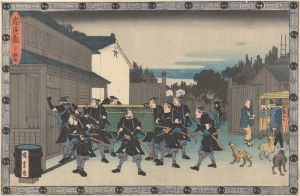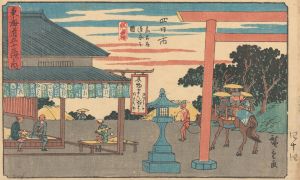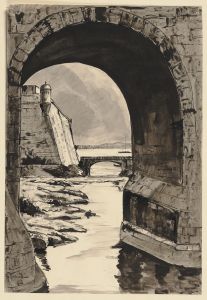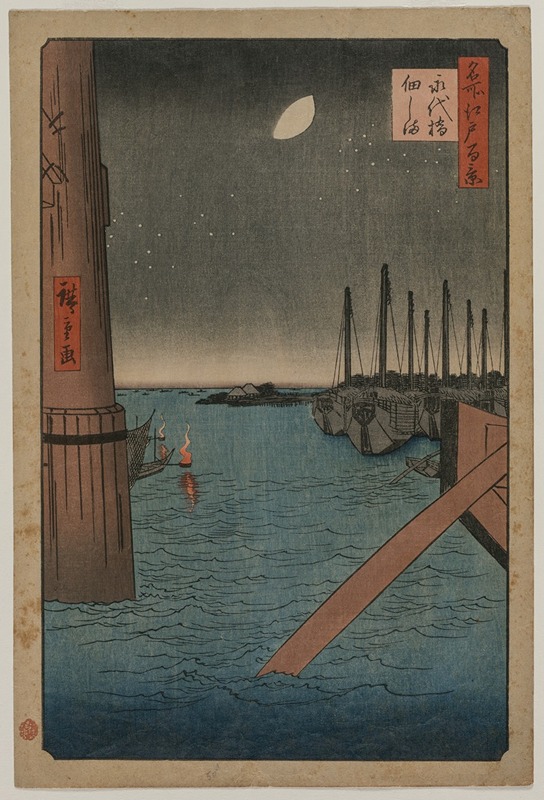
Tsukudajima from Eitai Bridge, from the series One Hundred Views of Famous Places in Edo
A hand-painted replica of Andō Hiroshige’s masterpiece Tsukudajima from Eitai Bridge, from the series One Hundred Views of Famous Places in Edo, meticulously crafted by professional artists to capture the true essence of the original. Each piece is created with museum-quality canvas and rare mineral pigments, carefully painted by experienced artists with delicate brushstrokes and rich, layered colors to perfectly recreate the texture of the original artwork. Unlike machine-printed reproductions, this hand-painted version brings the painting to life, infused with the artist’s emotions and skill in every stroke. Whether for personal collection or home decoration, it instantly elevates the artistic atmosphere of any space.
"Tsukudajima from Eitai Bridge" is a woodblock print by the renowned Japanese ukiyo-e artist Andō Hiroshige. This artwork is part of his celebrated series "One Hundred Views of Famous Places in Edo" (Meisho Edo Hyakkei), which was published between 1856 and 1858. Hiroshige is known for his masterful landscapes and his ability to capture the essence of Edo-period Japan, and this series is considered one of his masterpieces.
The print depicts a view from the Eitai Bridge, looking towards Tsukudajima, an island in the Sumida River in Edo, which is present-day Tokyo. The Eitai Bridge was an important crossing point over the Sumida River and a popular spot for both locals and travelers to enjoy scenic views of the city and its surroundings. Tsukudajima, originally settled by fishermen from the Tsukuda region in Osaka, was known for its fishing industry and its production of tsukudani, a type of preserved food made with soy sauce.
Hiroshige's depiction of Tsukudajima from the Eitai Bridge captures the tranquil beauty of the area, with an emphasis on the harmonious relationship between the natural and urban landscapes. The composition typically features the wide expanse of the Sumida River, with boats gently floating on the water, and the distant view of the island. The sky often plays a significant role in Hiroshige's prints, with varying colors and cloud formations that suggest different times of day or weather conditions, adding to the mood and atmosphere of the scene.
The "One Hundred Views of Famous Places in Edo" series is notable for its innovative use of perspective and composition, which were influenced by Western art techniques that were becoming known in Japan during the late Edo period. Hiroshige's work in this series is characterized by its vibrant colors, attention to detail, and the ability to convey a sense of place and moment. His prints not only serve as artistic expressions but also as historical documents that provide insight into the landscapes and daily life of Edo-period Japan.
Hiroshige's influence extends beyond Japan; his work had a significant impact on Western artists, particularly during the Japonisme movement in the late 19th century. Artists such as Vincent van Gogh and Claude Monet admired Hiroshige's compositions and use of color, which can be seen in their own works.
"Tsukudajima from Eitai Bridge" exemplifies Hiroshige's skill in capturing the serene beauty of Edo's landscapes and his ability to evoke a sense of nostalgia and appreciation for the natural world. Today, Hiroshige's prints are highly valued by collectors and continue to be celebrated for their artistic and cultural significance.





